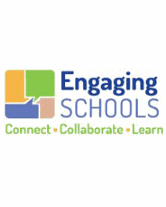Objectives
- Students will learn the "Talk It Out Together" method of solving conflicts.
- Students will practice this conflict-solving process.
NOTE: Few children in preschool or the primary grades will master this process initially, and most will need help remembering and implementing it. By introducing it and practicing it, children will begin to acquire some of these skills, but even older children may still need help in using them or rely on adults to get the process started.
Materials
- Copies of the Talk It Out Together Conflict-Solving Chart (http://teachervision.com/tv/printables/TalkItOutTogetherChart.pdf)
This is a PDF. For help in downloading PDF's. - Two hand Puppets
Procedures
- Display the Talk It Out Together Conflict-Solving Chart and explain that the "Talk It Out Together" method is a problem-solving process that's easy to remember. It consists of the following steps:
Step One: Get Together
Step Two: Take Turns Talking and Listening.
Step Three: What Will Help?
Step 4: Choose a Plan.
Step 5: Do It! - Walk the group through the "Talk It Out Together" method, using the following puppet role play:
- Have the puppets model the steps of the method in the following ways:
Step One: Get Together. The puppets face each other for step one.
Step Two: Take Turns Talking and Listening. The puppets take turns talking about how they felt about the toy and about the pushing and falling.
Step Three: What Will Help? The puppets take turns suggesting plans that will make both parties feel okay.
Step Four: Choose a Plan. The puppets suggest two different solutions that are agreeable to both of them.
Ask the students to give a thumbs-up for the plan they like the best.
Step Five: Do It! The puppets pick the plan they like by signaling thumbs-up.
The puppets are cleaning up after an activity. Two puppets are pulling at the same toy until one of the puppets pushes the toy at the other and he falls down and starts to cry. Say, "The puppets seem to have a problem. Let's use the 'Talk It Out Together' method to resolve this conflict."
* This model was developed through the collaboration of ESR's Early Childhood training team: Lisa M. Cureton, Chris Gerzon, Rebecca Johns, Kim Jones, William J. Kreidler, Carol Miller Lieber, Sarah Pirtle, and Sandy Tsubokawa Whittall.
Excerpted from Early Childhood Adventures in Peacemaking by William J. Kreidler and Sally Tsubokawa.




